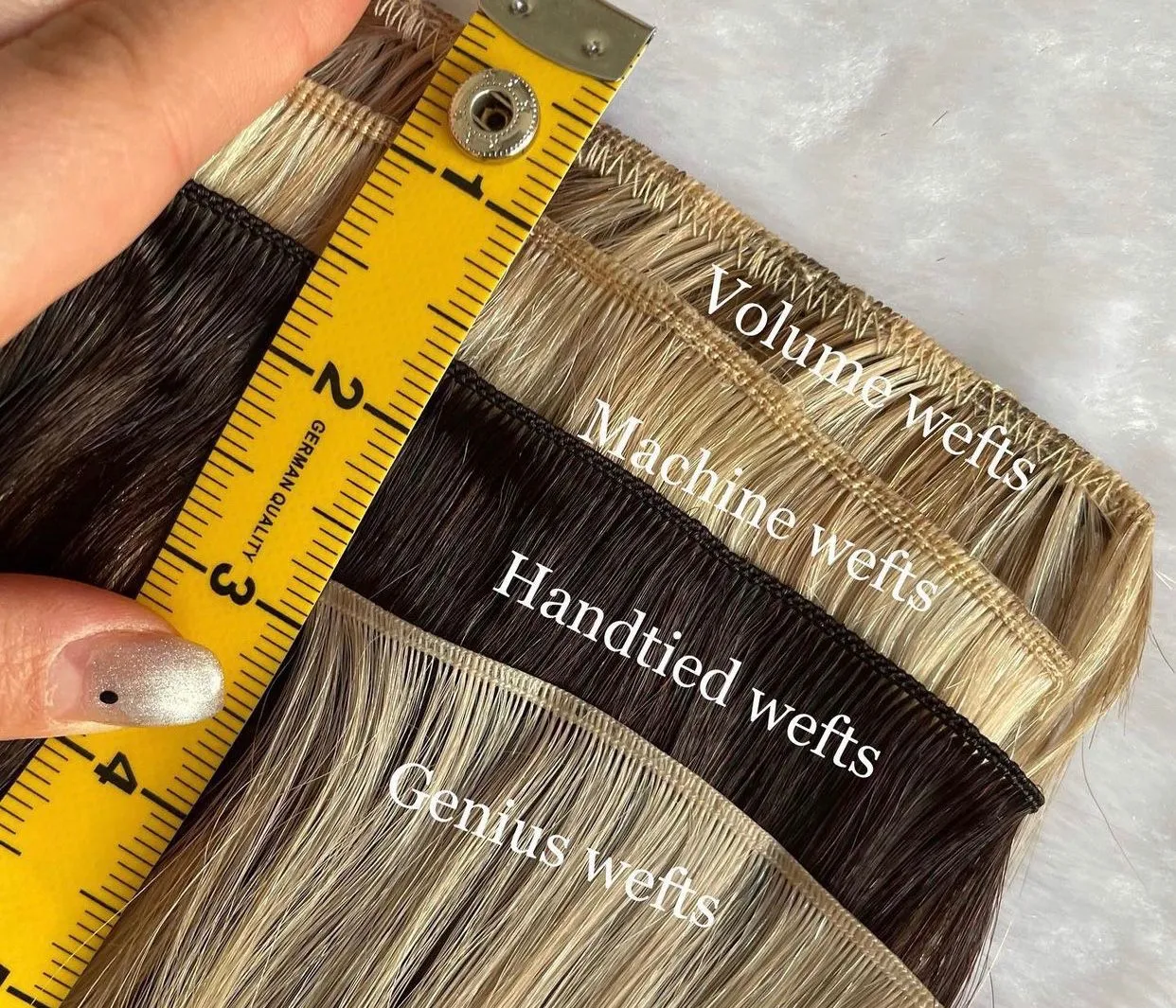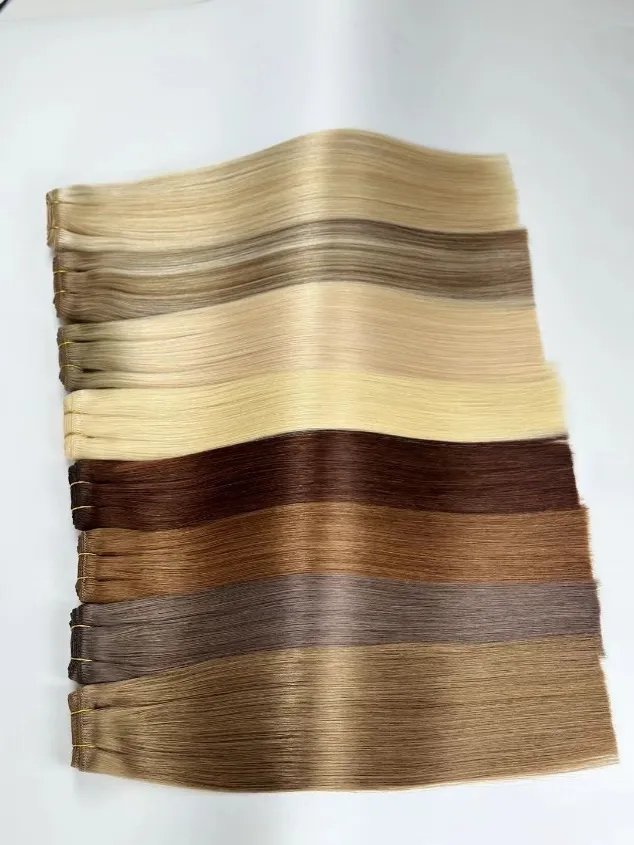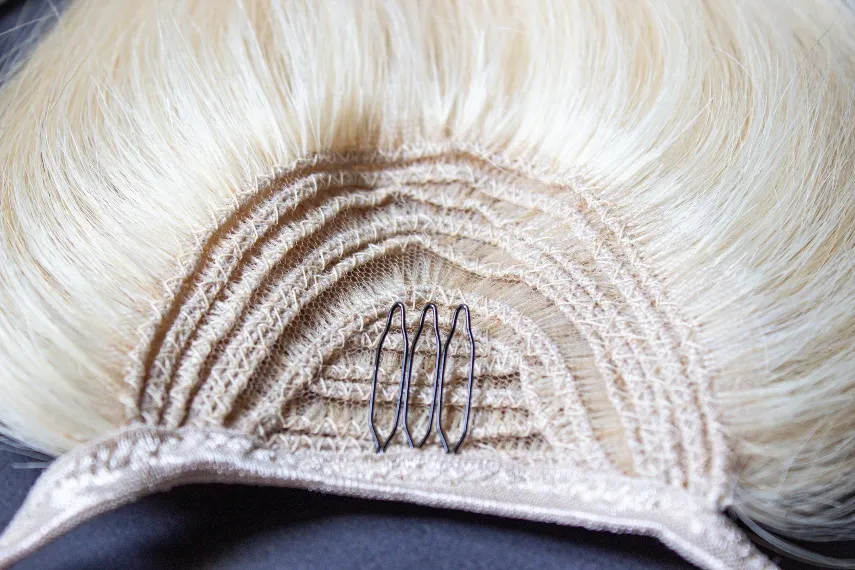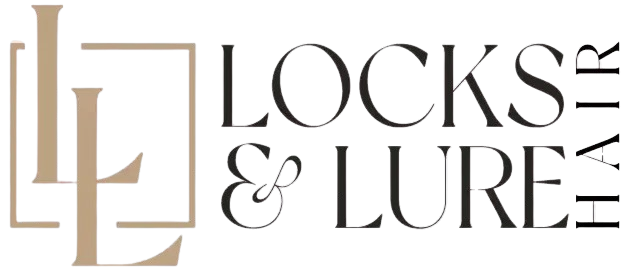
Our weft hair extension buying guide is a response to the overwhelming variety, technical aspects, financial investment, and emotional significance of hair extensions. Our goal is to bring clarity to the weft hair extension marketplace and empower consumers with knowledge so you can set realistic expectations, save time and money while minimizing the risk of disappointment. Our aim is to help you in identifying high-quality extensions by explaining characteristics like intact cuticles and consistent thickness, and help you avoid misrepresented products.
What are Weft Hair Extensions?
A weft is a collection of hair strands that are sewn or bonded together at one end to create a long strip or curtain of hair. The hair strands are attached to a thin base, which can be made of different materials depending on the type of weft (e.g., fabric for sew-ins, adhesive for tape-ins). The word “weft” comes from an Old English word that means “to weave.” In hair extensions, the term “weft” is used because the hair strands are essentially “woven” or sewn together at the top to form the extension piece, similar to how threads are woven in fabric. Many are familiar with how the term “track” is often used interchangeably with “weft.” Well the weft is the physical product, the actual strip or curtain of hair and the track refers to the horizontal section of your natural hair where the weft is attached. For example, when getting a sew-in weave, your natural hair is braided into horizontal “tracks” around your head, and then the hair wefts are sewn onto these tracks.
How Are Weft Hair Extensions Applied?
Weft hair extensions can be applied in a variety of ways with the most common being:
- Sew-In Weave: Your natural hair is braided into horizontal tracks across your scalp. Then, the hair wefts are sewn onto these braids using a needle and thread. This method is secure and can last for several weeks.
- Tape-In Extensions: These wefts have a double-sided adhesive tape at the base. Sections of your natural hair are “sandwiched” between two wefts. This method is relatively quick to apply and remove and doesn’t involve heat or sewing.
- Glue-In Extensions: This method involves applying a special hair extension glue directly to the base of the weft and then attaching it to sections of your natural hair near the roots.
- Braidless Weave sometimes referred to as the “Invisible Bead” method or “LA Weave”: This newer method involves creating a foundation using silicone-lined beads strategically placed on your natural hair. The wefts are then sewn onto these beads, creating a secure and often more comfortable and less bulky application compared to traditional sew-ins.
The best application method for you will depend on your hair type, lifestyle, budget, and desired look.
Do Weft Hair Extensions Damage Your Natural Hair?
If not applied, maintained, or removed correctly, weft hair extensions have the potential to damage your natural hair. The severity of potential damage can vary depending on the application method, the quality of the extensions, and how well you’ve cared for them. For example:
Sew-In Weaves: If the braids are too tight or the wefts are sewn in too tightly, it can put excessive tension on your scalp and hair follicles, leading to traction alopecia (hair loss).
Weight: Heavy wefts can also strain the hair.
Improper Removal: Cutting the wefts out incorrectly can lead to accidentally cutting your natural hair.
Neglecting Natural Hair: It can be harder to properly cleanse and condition your scalp and natural hair underneath the braids, potentially leading to dryness and breakage.
Tape-In Extensions: Low-quality adhesive or improper removal can pull or break your natural hair. Pulling or tugging on the extensions during styling can cause stress at the attachment points. Product buildup around the tape can lead to tangling and make removal more difficult.
Glue-In Extensions: The glue itself can sometimes be harsh on the hair and scalp. Removing glue-in extensions often requires harsh chemicals that can strip and weaken your natural hair. This method is generally considered more damaging than others.
Braidless Weave (Invisible Bead/LA Weave): If the beads are placed too tightly or if too much hair is attached to each section, it can cause tension and breakage. Removing the beads incorrectly can also lead to damage.
However an experienced stylist will know how to apply the extensions correctly, taking into account your hair type and density to minimize tension and stress. Using good quality human hair extensions that aren’t too heavy for your natural hair is vital. While weft hair extensions can be a great way to add length and volume, it’s essential to choose a reputable stylist, use high-quality hair, and follow a proper maintenance routine to minimize the risk of damage to your natural hair.
How Long do Weft Hair Extensions Last?
The lifespan of weft hair extensions depends on several factors with hair quality chief among them. Lower quality hair and synthetic blends may last only a few months, however high-quality human hair wefts, particularly Remy hair, can last 6-12 months and even longer with excellent care.
The application method will impact the lifespan of weft hair extensions and though the wefts themselves can last for several months, with sew-in installation the braids typically need to be redone every 4 to 8 weeks due to natural hair growth and the hair itself can be reused – getting the extensions moved up as your natural hair grows prevents tension and matting, prolonging their lifespan. Tape-in extensions too generally last for 4 to 8 weeks before needing to be re-taped and moved up and again, the hair itself can be reused multiple times. Braidless Weave (Invisible Bead/LA Weave) The installation usually lasts for 6 to 8 weeks, and the hair can often be reused – getting the extensions moved up as your natural hair grows prevents tension and matting, prolonging their lifespan. Glue-in extensions on the other hand typically last for 2 to 4 weeks and are generally not reused.
You can lengthen the longevity of weft hair extensions by investing in good quality Remy hair where the cuticles are intact and aligned, reducing tangling and allowing the hair to withstand washing and styling better. Skilled professional installation ensures the extensions are secure and don’t put undue stress on your natural hair. Using Sulfate-Free and Extension-Safe Products is important as harsh chemicals can strip the hair of its moisture and shorten its lifespan. Limiting exposure to chlorine, salt water, and harsh styling products can help maintain the quality of the extensions. You’ll want to use a soft bristle brush designed for extensions to avoid pulling and tangling. Many find sleeping on a silk or satin pillowcase or in a loose braid cuts down on subjecting your hair to friction and tangling. Keeping the scalp clean is important, but washing too frequently can dry out the extensions. Always apply a heat protectant spray before using styling tools like straighteners, curling irons, or blow dryers.
How Many Wefts Do I Need for a Full Head of Hair?
The number of wefts needed for a full head of hair can vary initially depending on thickness and volume desired. Wefts come in different thicknesses and some are denser and contain more hair, so you might need fewer. If you have very short hair, you might need more wefts to create a seamless blend with longer extensions. However if you have naturally thick hair, you might need more wefts to match that density. If you have fine hair, you might need fewer to avoid the extensions looking too bulky. The way your stylist sections your hair and applies the wefts can also influence the number needed.
General Guidelines:
- For Adding Volume Only: 2-4 wefts might be sufficient for adding some thickness to your natural hair.
- For Adding Length and Moderate Volume: 3-5 wefts are a common range for achieving both noticeable length and a good amount of volume.
- For Significant Length and Volume: 5-8 wefts or more might be needed for a very full and dramatic look, especially with longer extensions.
The most accurate way to determine how many wefts you need for a full head is to consult with a professional hair extension stylist. They will assess your natural hair, discuss your desired look, and recommend the appropriate number of wefts for your specific needs.

Flat Weft

Machine Weft

Genius Weft

Hand-tied Weft

Volume Weft

